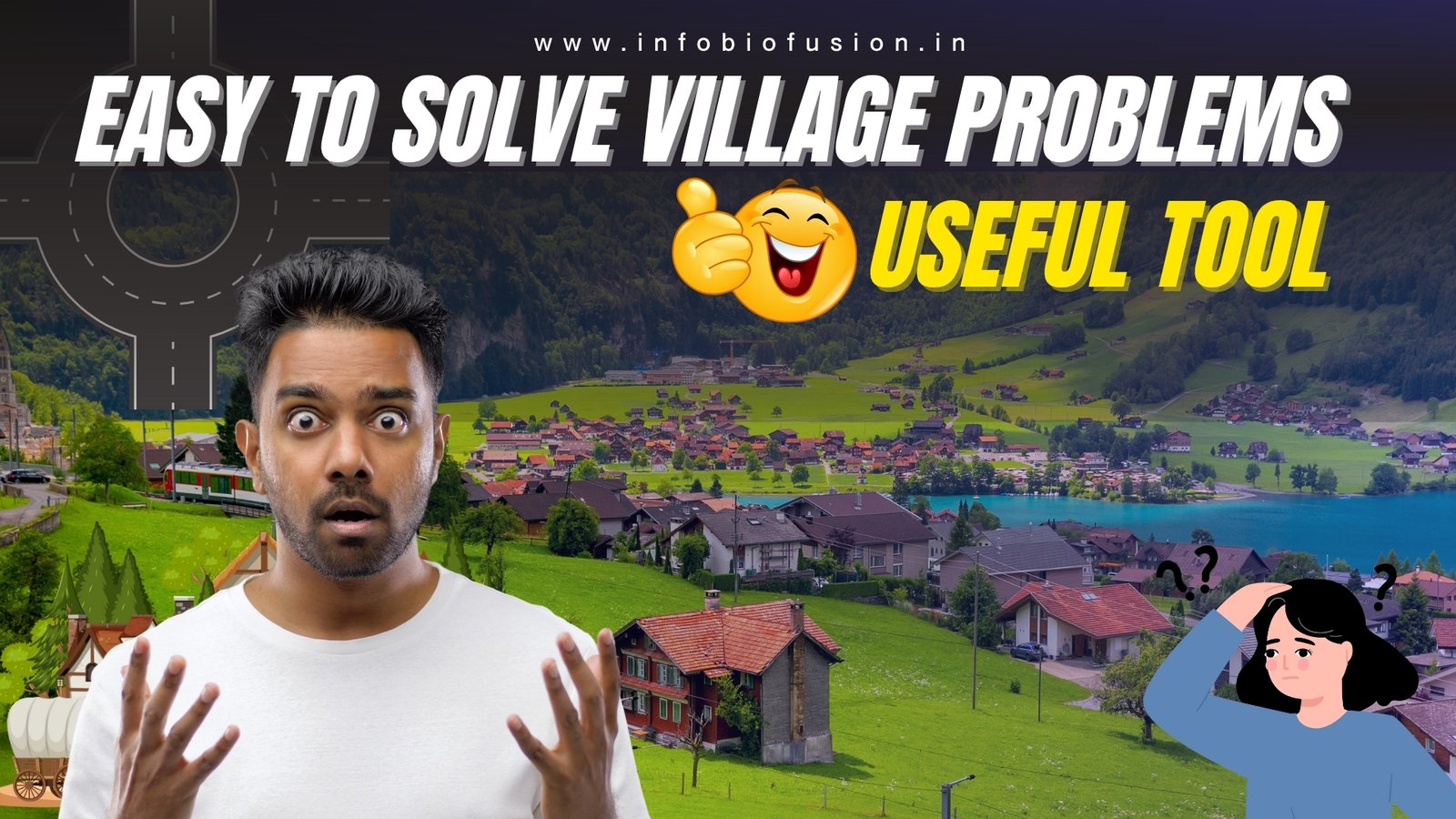In today’s digital age, many online apps are helping villagers solve common daily problems with just a mobile phone. These apps bring services like land records, health info, education, weather updates, and government schemes right to their fingertips, without needing to visit town offices. This is especially useful for elderly people or farmers who live far from city centers.
One major benefit is land-related information. Apps like Dharani (Telangana), Maa Bhoomi, Bhulekh, and Meebhoomi allow users to check their land ownership, ROR 1B, Adangal, and EC documents from their phone easily. This removes the need to travel and stand in long queues at revenue offices.
Farmers can use agriculture apps like Kisan Suvidha, IFFCO Kisan, and Rythu Bandhu to get instant updates about weather forecasts, crop suggestions, market prices, and subsidy eligibility. This helps them plan better and avoid losses due to climate or market changes.
For health issues, villagers can use eSanjeevani, Practo, or 1MG to consult doctors online, order medicines, or book lab tests. This is especially helpful where hospitals or doctors are far away.
Education apps like DIKSHA, BYJU’S, and Toppr help children in villages attend online classes, prepare for exams, and study in regional languages, even with low internet.
Many apps like UMANG and Aarogya Setu combine services like pension details, COVID info, gas subsidy tracking, and birth/death certificate applications in one place, saving time and energy.
Women in villages are also using apps like Mahila E-Haat and SHG apps to sell handmade products online, join skill training, and manage self-help groups easily.
Even for banking, apps like Airtel Payments Bank, Paytm, and PhonePe allow villagers to send or receive money, recharge phones, or pay electricity bills safely without visiting the bank.
In summary, these apps are like digital bridges connecting villages to the benefits of modern technology. With a basic smartphone and internet, villagers can now solve everyday problems more easily, save money, and improve their quality of life.
Another powerful use of online apps in villages is for government scheme awareness and application tracking. Apps like UMANG and AP Seva help users apply for pensions, scholarships, ration cards, and employment cards directly from home. People no longer need to rely on middlemen or visit government offices, saving both time and money.
Water and electricity complaints can now be registered online using apps provided by state utilities. Villagers can simply take a photo of a faulty meter or leak and upload it in the app. Officials respond faster, improving basic services in rural areas.
For people involved in fisheries or animal husbandry, apps like Pashu Poshan, e-Gopala, and Blue Revolution offer tips, veterinary doctor consultations, and information about subsidies or feed schedules. This boosts income and reduces disease risks.
Youth in villages are now using job search apps like Rozgar Setu, NCS (National Career Service), and WorkIndia to find local jobs, government vacancies, or online freelancing work. With proper mobile training, many rural youth are earning money without migrating to cities.
Some apps are specially made to report village issues like streetlight problems, drainage blocks, or sanitation complaints. Platforms like MyGov, Swachhata App, and Gram Panchayat App allow direct contact between villagers and local government bodies, speeding up the solution process.
In tribal or forest areas, apps like Vanbandhu Kalyan Yojana and Forest Rights App help people know their legal rights, claim land under forest acts, and avoid illegal land grabs.
Importantly, digital literacy apps like DigiLocker, Google Pay for India, and Learn Digital India teach villagers how to use smartphones safely, avoid frauds, and access all services independently.
By using these apps daily, villages are becoming smarter, more connected, and more self-reliant. Digital India is truly reaching rural hearts, turning smartphones into tools for empowerment and change.
Online apps are also transforming the way village-level committees and gram panchayats function. Through apps like eGramSwaraj, village secretaries and leaders can now manage budgets, track development projects, and share updates with the public. This brings transparency and encourages local people to stay involved in village progress.
Emergency services have also become easier to access. Apps like 112 India provide quick help during accidents, medical emergencies, or threats to personal safety. This is a game-changer for remote villages where help might otherwise take too long to arrive.
Many women and youth empowerment initiatives are also being run through apps. Platforms like Mahila Samakhya and Skill India Digital Platform offer free courses, job-oriented training, and awareness about women’s rights. This helps build confidence and opens up new earning opportunities.
Another growing trend is the use of language translation and voice assistant apps like Google Lens and Google Assistant, which help villagers who may not read or write English or Hindi. They can use voice commands in their local language to check weather, call a family member, or search for government forms.
Tele-law apps are helping villagers get free legal advice without needing to travel to a court or hire a lawyer. This is especially important in land disputes, domestic violence cases, or pension-related issues.
Apps like mPariksha, Agri App, and e-Mausam are helping students and farmers stay informed and make smarter decisions. For instance, before sowing seeds, a farmer can check rainfall predictions or choose better crop varieties using these apps.
With digital tools becoming more affordable and available in regional languages, digital inclusion is growing fast in rural India. Even basic smartphones are becoming powerful gateways to health, income, learning, and justice.
In the coming years, as internet access and digital awareness grow even more, villages will no longer be left behind. With the right apps and training, rural communities can solve most of their day-to-day problems from the palm of their hand.








